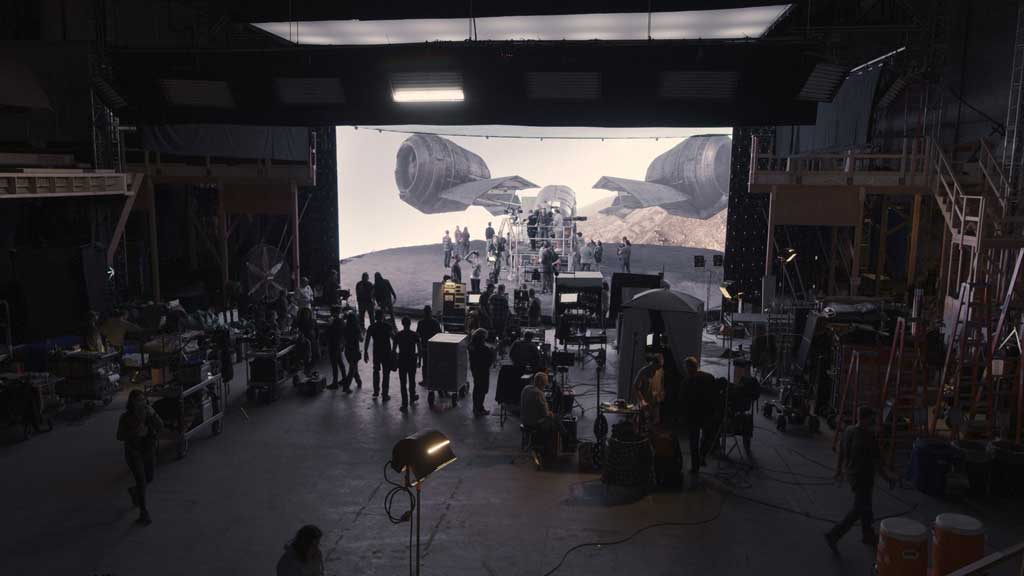Review: Light & Magic Disney+ Documentary Series
If you have been to a movie in the last 40+ years the odds that you have seen the end product of the team at Industrial Light and Magic (ILM) are high. This small company that George Lucas started for Star Wars in 1975 has grown into the go to special effects house for much of Hollywood.

Light & Magic is a six part documentary streaming on Disney+ starting Wednesday July 27th. This series showcases the people that brought some of the most famous special effects shots to life and who blazed the trail inventing new technologies and methods first in practical and models then digitally over the decades to answer the call of numerous directors and countless films.
Here is the trailer for the series:
I was given the opportunity to screen the six episodes, here is a quick summary of each:
- Episode 1 – “Gang of Outsiders” – Industrial Light and Magic was founded in 1975 by George Lucas and set up shop in a warehouse in Van Nuys California. Their mission was to create the effects for Star Wars. A team of visual effects friends who became legends was assembled including John Dykstra, Dennis Muren, Lorne Peterson, Harrison Ellenshaw, Ken Ralston, Joe Johnston, Phil Tippett.
- Episode 2 – “On the bucking bronco” – Now that the team was assembled it was time to start creating the film using the motion controlled systems they developed. This episode looks at the challenges to make their first film, Star Wars.
- Episode 3 – “Just think about it” – After Star Wars was complete they had to prepare for the second film, Empire Strikes Back. During this time the company relocated to move to San Francisco. The computer division was started with Ed Catmull & Jim Blinn.
- Episode 4 – “I think I found my people” – With Empire Strikes Back completed and time before Return of the Jedi ILM worked on films for friends of George Lucas including Raiders of the Lost Ark and E.T. for Steven Spielberg. In the early 80s they also worked with Ron Howard on Cocoon and Robert Zemeckis on Back to the Future. During this time the digital transition began. Pixar software and machines were put to use and but Ed and his team wanted to move toward animated films and Pixar was sold to Steve Jobs to pursue that avenue.
- Episode 5 – “Morfing” – As the late 80s approached the transition to digital sped up with work such as the transformation sequence in Willow. Mark Dippe & Steve “Spaz” Williams became key members of the Computer Graphics team that only accelerated this change. They worked on projects including the Abyss with James Cameron and then Terminator 2.
- Episode 6 – “No more pretending you’re dinosaurs” – A transformative leap happened with Jurassic Park in 1993 and the creation of fully digital characters. This transition continues with the original Star Wars prequels in the end of the decade. Jon Favreau because a believer in computer graphics during the creation of Iron Man. Jon worked with ILM to keep pushing digital filmmaking leading up to the “Volume” which was first used on the Mandalorian.

This documentary tells the story of Industrial Light and Magic, the company, by highlighting many of the key milestones and challenges but the heart of the series is the focus on the people involved. This small group of people that became friends and then family and grew over time. The series shares many of their personal stories. The directors that entrust ILM for their films are spotlighted throughout and they share their experiences and impressions of working with ILM and the evolution of special effects.
Overall I really enjoyed the series. I am the type of person who gravitates toward the loner making of/behind the scenes featurettes and documentaries on home video releases. I am interested in learning more about the people and processes that bring the films we enjoy to life. This documentary delivers on this. You hear first hand accounts from the key people involved in many of the pivotal sequences and films over the years. I would give a warning that the series is a big time investment at around an hour an episode plus it is a documentary that takes a deep dive into the subjects that are explored so it may not work for everyone. Also note this is not a comprehensive look at ILMs filmography nor the technical achievements that sprung from the company. They choose key milestones to discuss which is really a highlight reel.


